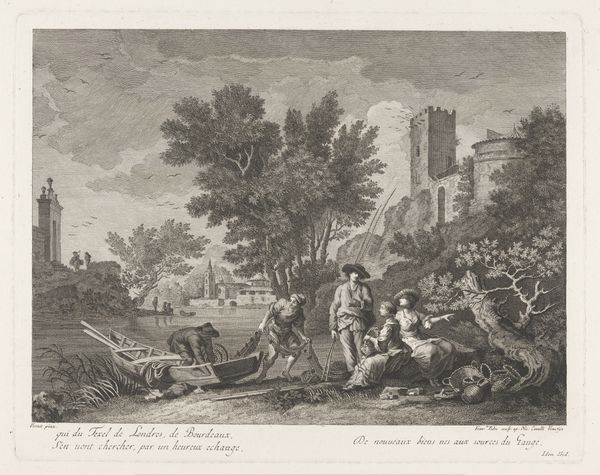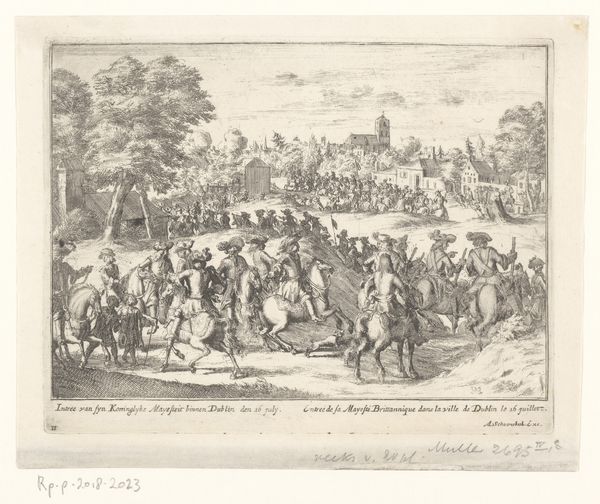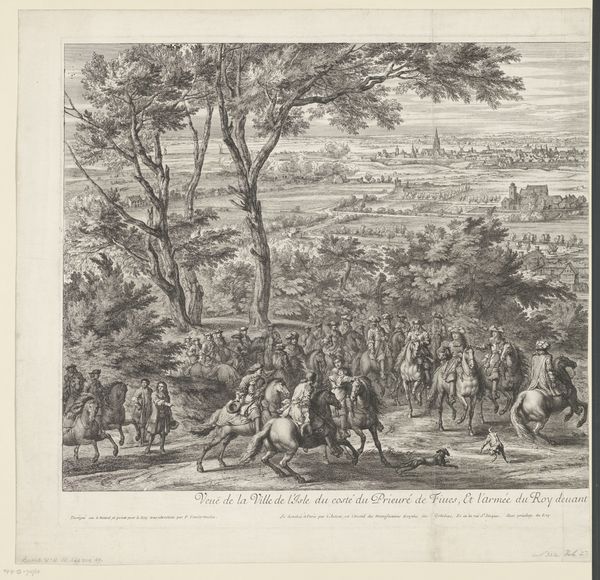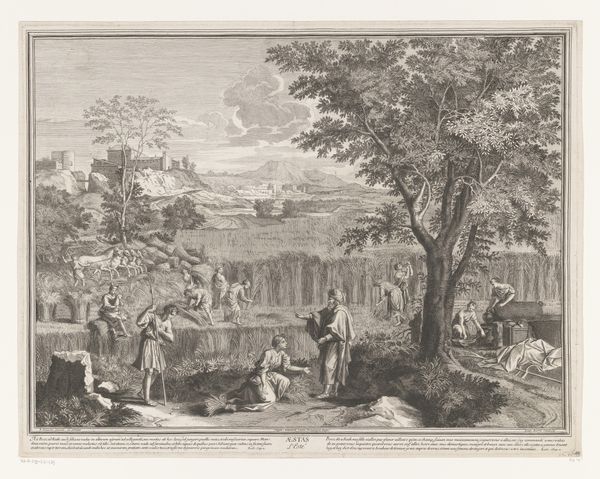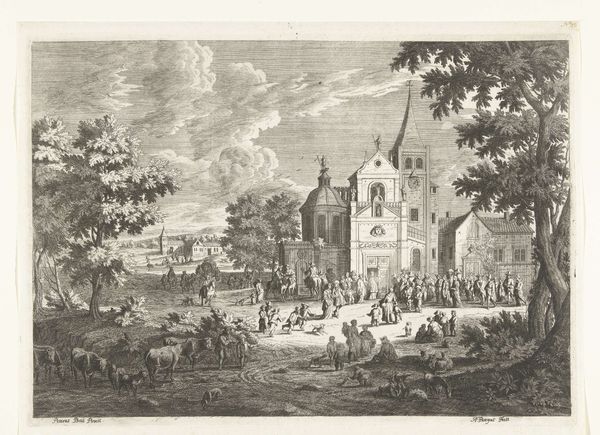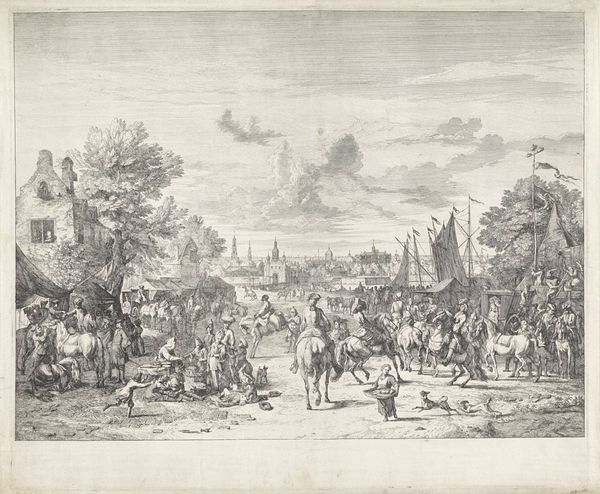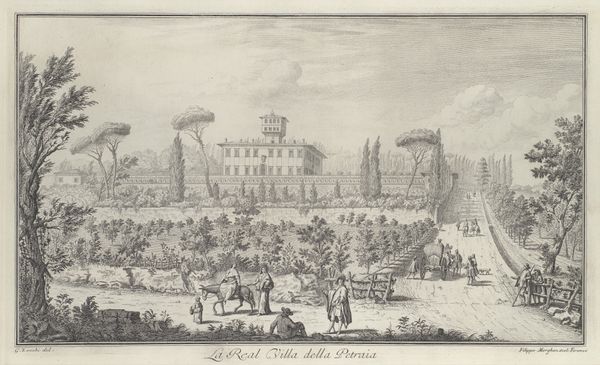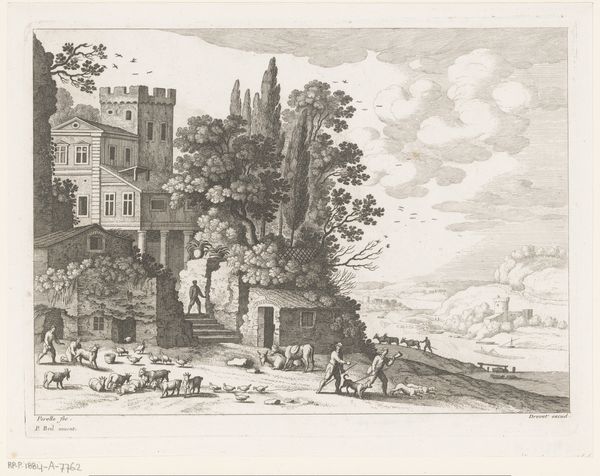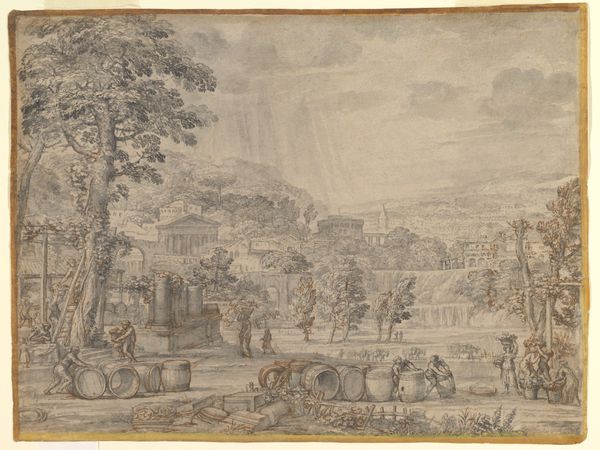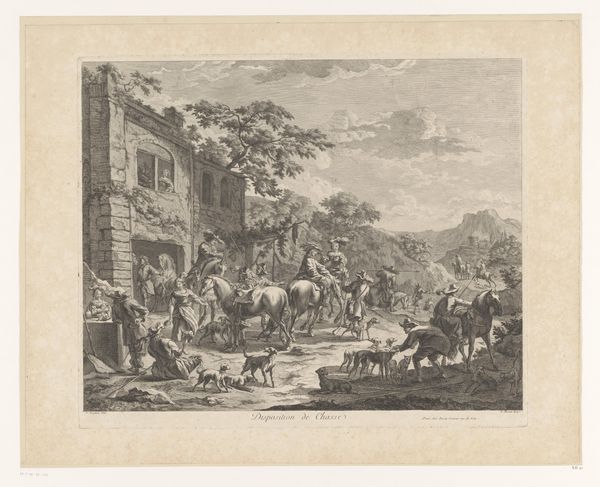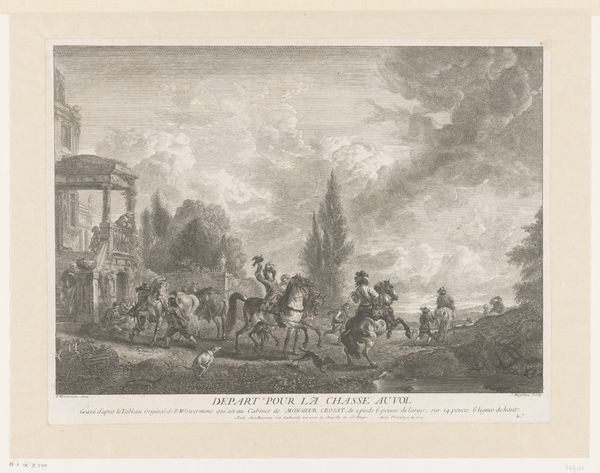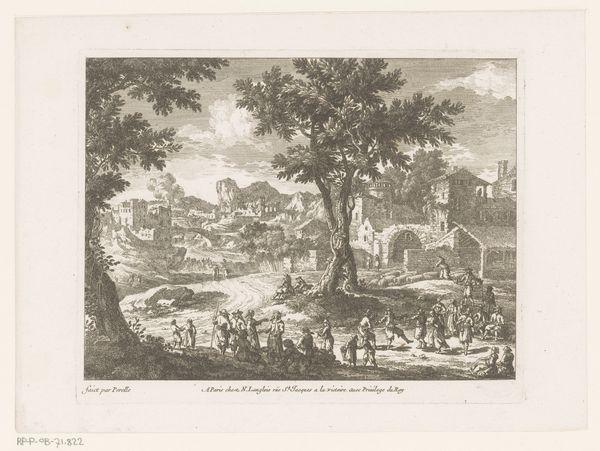
Landschap met groep mensen, kijkend naar een wedstrijd verspringen 1686 - 1758
0:00
0:00
jacquesrigaud
Rijksmuseum
#
aged paper
#
light pencil work
#
parchment
#
pencil sketch
#
old engraving style
#
personal sketchbook
#
ink drawing experimentation
#
pen-ink sketch
#
pen work
#
pencil work
Dimensions: height 184 mm, width 278 mm
Copyright: Rijks Museum: Open Domain
Editor: So this is "Landschap met groep mensen, kijkend naar een wedstrijd verspringen," or "Landscape with a Group of People Watching a Broad Jump Competition," by Jacques Rigaud, dating somewhere between 1686 and 1758. It's at the Rijksmuseum. Looking at the aged paper, it's evocative of an earlier time. The pen work seems delicate. How do you approach this piece? Curator: Let's think about this print in the context of its production. Consider the materials: paper, ink, the printing press. This wasn't some spontaneous sketch; it was a calculated reproduction. How does that impact our understanding of what Rigaud intended to convey? Was he trying to make this widely available? And for whom? Editor: That's a good point. The existence of multiple copies changes things. It makes me think it wasn't necessarily about a unique artistic vision, but more about disseminating a scene. The print also bears some inscription: "LES TROIS SAUTS". This suggests there was a cultural demand for images like these? Curator: Exactly! Who was consuming these images, and what was their social standing? The clothing of the people indicates this event, depicted using fine lines with the intaglio process, wasn’t exactly an ordinary daily occurrence of the common folk. Further, let's examine the physical process itself – the labor involved in creating the plate, printing it, distributing it. These are all part of the artwork’s story. What do you think this adds to our interpretation of Rigaud’s landscape? Editor: Viewing it through that lens, it isn’t simply a landscape. It becomes an artifact embedded within a specific economic and social system. The print acts as a commodity, documenting a curated scene. Thanks! Curator: Precisely! By focusing on the material and social context of production, we unveil hidden dimensions within even seemingly straightforward landscapes. It underscores how deeply art is embedded in material reality.
Comments
No comments
Be the first to comment and join the conversation on the ultimate creative platform.
